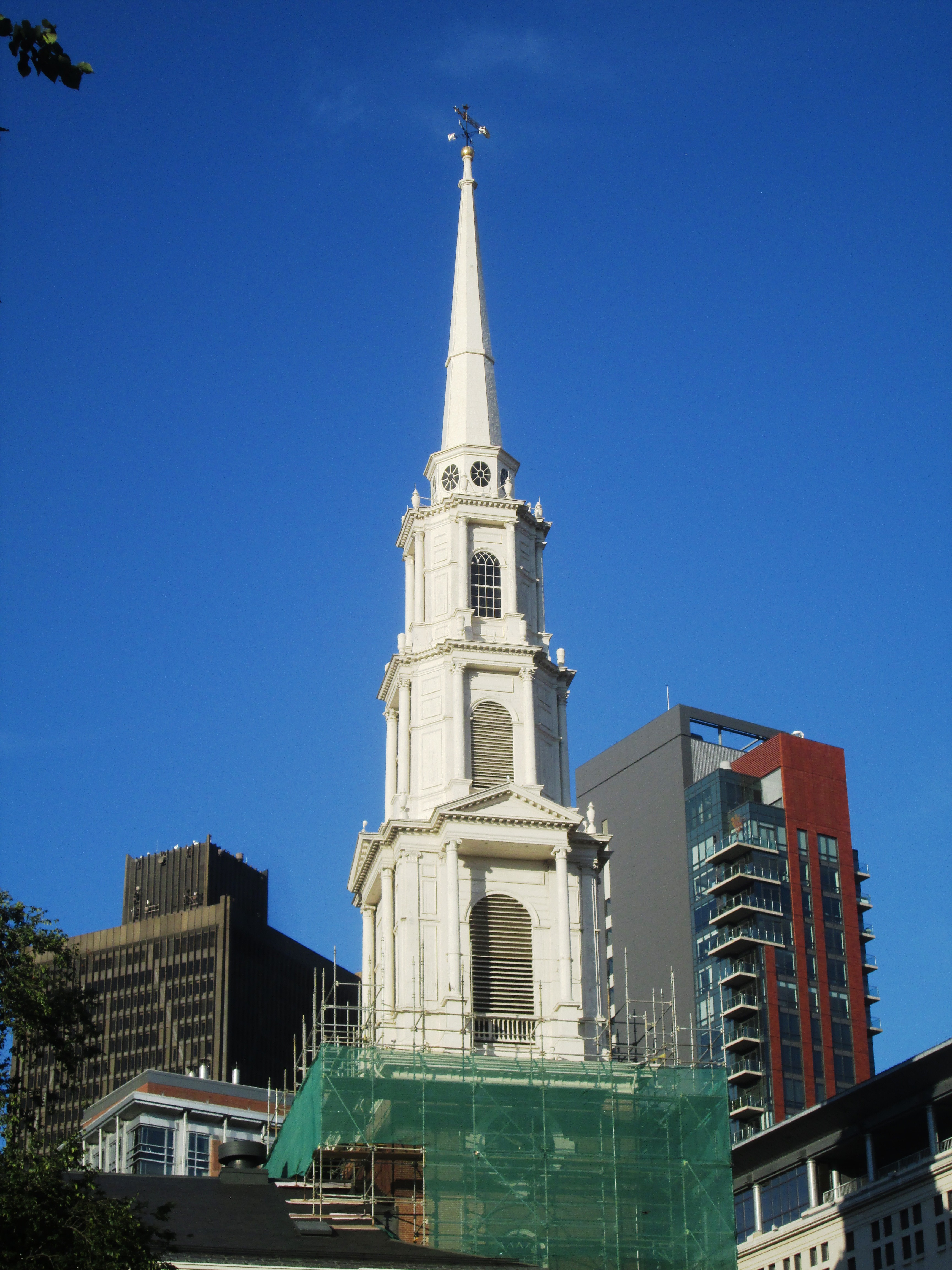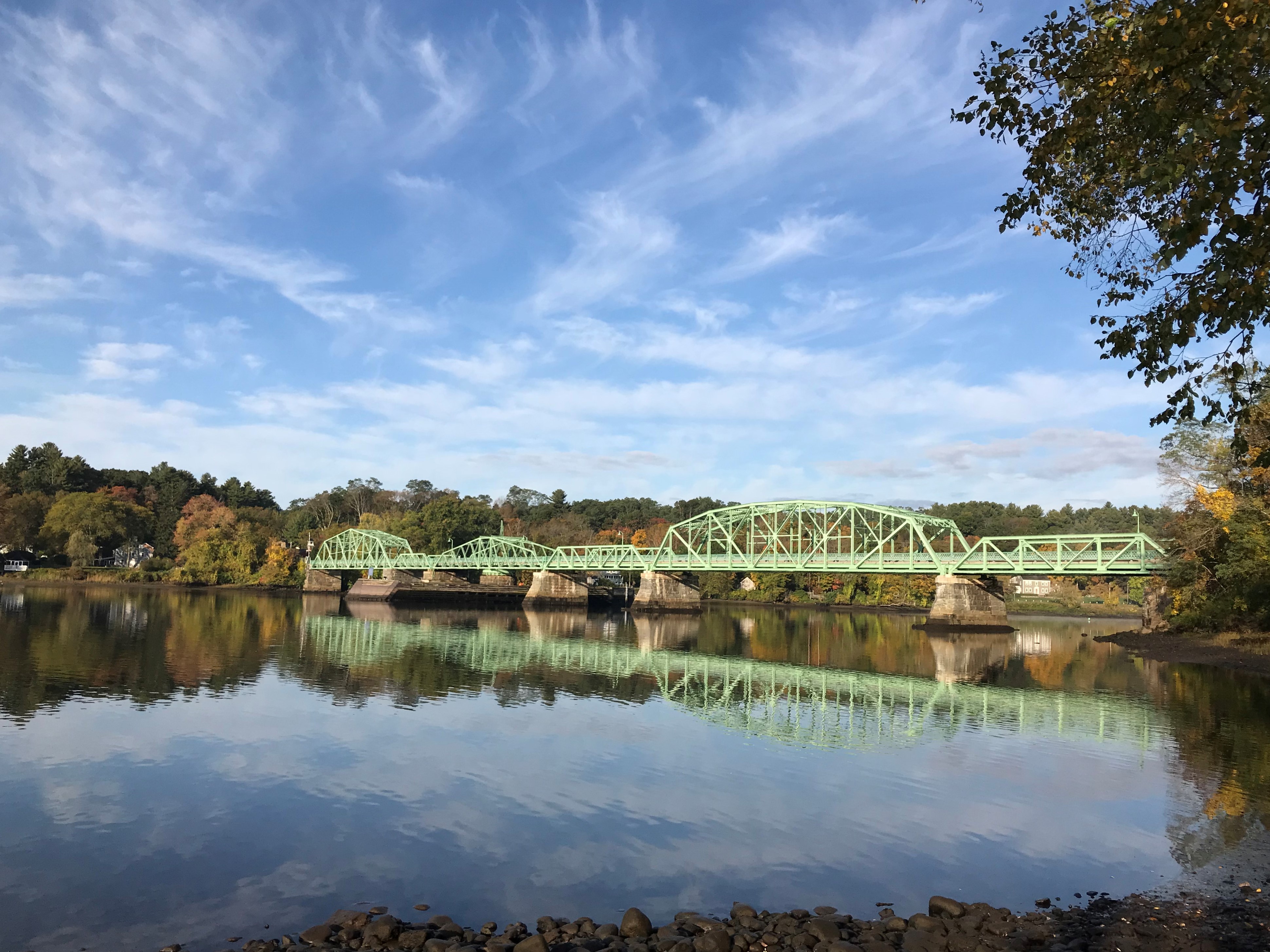|
Jedidiah Morse
Jedidiah Morse (August 23, 1761June 9, 1826) was an American geographer and preacher whose textbooks became a staple for students in the United States. He was the father of the telegraphy pioneer and painter Samuel Morse, and his textbooks earned him the sobriquet of "father of American geography." Early life and education Born to a New England family in Woodstock, Connecticut, his parents were Jedidiah Morse and Sarah Child. Morse did his undergraduate work and earned a divinity degree at Yale University (M.A. 1786). While pursuing his theological studies under Jonathan Edwards and Samuel Watts, he established a school for young women in 1783 in New Haven. Career In the summer of 1785, he was licensed to preach, but continued to occupy himself with teaching. He became a tutor at Yale in June 1786, but, resigning this office, was ordained on November 9, 1786, and settled in Midway, Georgia, where he remained until August of the following year. He spent the winter of 1787 and 1 ... [...More Info...] [...Related Items...] OR: [Wikipedia] [Google] [Baidu] |
Samuel Morse
Samuel Finley Breese Morse (April 27, 1791 – April 2, 1872) was an American inventor and painter. After establishing his reputation as a portrait painter, Morse, in his middle age, contributed to the invention of a Electrical telegraph#Morse system, single-wire telegraph system based on European telegraphs. He was a co-developer of Morse code in 1837 and helped to develop the commercial use of telegraphy. Personal life Samuel F. B. Morse was born in Charlestown, Boston, Massachusetts, the first child of the pastor Jedidiah Morse, who was also a geographer, and his wife Elizabeth Ann Finley Breese. His father was a great preacher of the Calvinism, Calvinist faith and supporter of the Federalist Party. He thought it helped preserve Puritan traditions (strict observance of Christian Sabbath, Sabbath, among other things), and believed in the Federalist support of an alliance with Britain and a strong central government. Morse strongly believed in education within a Federalist f ... [...More Info...] [...Related Items...] OR: [Wikipedia] [Google] [Baidu] |
American Academy Of Arts And Sciences
The American Academy of Arts and Sciences (The Academy) is one of the oldest learned societies in the United States. It was founded in 1780 during the American Revolution by John Adams, John Hancock, James Bowdoin, Andrew Oliver, and other Founding Fathers of the United States. It is headquartered in Cambridge, Massachusetts. Membership in the academy is achieved through a nominating petition, review, and election process. The academy's quarterly journal, '' Dædalus'', is published by the MIT Press on behalf of the academy, and has been open-access since January 2021. The academy also conducts multidisciplinary public policy research. Laurie L. Patton has served as President of the Academy since January 2025. History The Academy was established by the Massachusetts legislature on May 4, 1780, charted in order "to cultivate every art and science which may tend to advance the interest, honor, dignity, and happiness of a free, independent, and virtuous people." The sixty-tw ... [...More Info...] [...Related Items...] OR: [Wikipedia] [Google] [Baidu] |
The Panoplist
''The Panoplist'' was a religious monthly magazine printed from 1805 until 1820 edited by Jeremiah Evarts Jeremiah F. Evarts (February 3, 1781 – May 10, 1831), also known by the pen name William Penn, was a Christians, Christian missionary, reformer, and activist for the rights of American Indians in the United States, and a leading opponent of the .... Other names for the publication *''The Panoplist''; or, ''The Christian Armory'' (1805-1808). *''Panoplist and Missionary Magazine'' (1808-1817), published in Boston by Jedediah Morse. Lepore, Jill, A is for American, Knopf, 2002. *''Panoplist and Missionary Herald'' (1818-1820). References External linksCongregational Library, Boston [...More Info...] [...Related Items...] OR: [Wikipedia] [Google] [Baidu] |
Old South Church
Old South Church (also known as New Old South Church or Third Church), is a historic United Church of Christ congregation in Boston, Massachusetts, first organized in 1669. Its present building at 645 Boylston Street was designed in the Gothic Revival style by Charles Amos Cummings and Willard T. Sears, completed in 1873, and amplified by the architects Allen & Collens between 1935–1937. The church, which was built on newly filled land in the Back Bay section of Boston, is located at 645 Boylston Street on Copley Square. It was designated a National Historic Landmark in 1970 for its architectural significance as one of the finest High Victorian Gothic churches in New England. It is home to one of the oldest religious communities in the United States. History of the congregation Established in 1669, Old South Church is one of the older religious communities in the United States. It was organized by National Council of the Congregational Churches of the United States, Congregati ... [...More Info...] [...Related Items...] OR: [Wikipedia] [Google] [Baidu] |
Park Street Church
Park Street Congregational Church, founded in 1809, is a historic and active evangelical congregational church in Downtown Boston, Massachusetts, United States. The Park Street Church is a member of the Conservative Congregational Christian Conference. Church membership records are private, but the congregation has over 1,200 members. The church is located at 1 Park Street, at the corner of Tremont Street. History Park Street Church is a stop on Boston's Freedom Trail. The founding of the church is dated to 1804 when the "Religious Improvement Society" began weekly meetings with lectures and prayer. The society organized the church on February 27, 1809. Twenty-six local people, mostly former members of the Old South Meeting House, wanted to create a church with orthodox Trinitarian theology. The church's cornerstone was laid on May 1, 1809, and construction was completed by the end of the year, under the guidance of Peter Banner (architect), Benajah Young (chief mason) and S ... [...More Info...] [...Related Items...] OR: [Wikipedia] [Google] [Baidu] |
Leonard Woods (theologian)
Leonard Woods (June 19, 1774 – August 24, 1854) was an American theologian. He was widely known for upholding orthodox Calvinism over Unitarianism. In 1796, Woods graduated from Harvard, and was soon ordained pastor in 1798 of the Congregational Church at West Newbury, MA. He was the first professor of Andover Theological Seminary and between 1808 and 1846, occupied the seminary's chair of Christian theology. He helped establish several societies including the American Tract Society, the American Education Society, the Temperance Society, and the American Board of Commissioners for Foreign Missions. Woods was elected a Fellow of the American Academy of Arts and Sciences in 1812. Woods was also an influential and outspoken proponent of slavery in the run-up to the American Civil War The American Civil War (April 12, 1861May 26, 1865; also known by Names of the American Civil War, other names) was a civil war in the United States between the Union (American C ... [...More Info...] [...Related Items...] OR: [Wikipedia] [Google] [Baidu] |
Samuel Spring
Rev. Samuel Spring (1746–1819) was an early American Revolutionary War chaplain and Congregationalist minister. Early life and education Spring was born in Uxbridge in the Massachusetts Colony on February 27, 1746. His father was John Spring (1706–1794), a militia man and local wealthy farmer, and his mother was Sarah Read (1716–1800). He was a great-great grandson of John Spring, a Founder and early settler of Watertown, Massachusetts, who travelled to America under the patronage of his cousin Sir William Spring, 1st Baronet, and was the great-grandson of John Spring of Lavenham and the great-great grandson of Thomas Spring of Lavenham. John later commanded the company of militia from Uxbridge in the American Revolution. His father was the town's moderator, selectman, and surveyor of highways, but lacked even a rudimentary education. Sarah, Samuel's mother, remained determined that he would have the best education possible. Spring studied under the Rev. Nathan Webb, ... [...More Info...] [...Related Items...] OR: [Wikipedia] [Google] [Baidu] |
West Newbury, MA
West Newbury is a town in Essex County, Massachusetts, United States. Situated on the Merrimack River, its population was 4,500 at the 2020 census. History Originally inhabited by Agawam or Naumkeag peoples, West Newbury was settled by English colonists in 1635 as part of neighboring Newbury. After 15 years of English colonization, a 30 acre section of land around Indian Hill in current day West Newbury was purchased from an indigenous man Great Tom for three pounds. On February 18, 1819, the General Court of Massachusetts passed an act "to incorporate the town of Parsons." The initial proposals had been made in the late 18th century, but determined resistance from the town of Newbury, which had already lost Newburyport, blocked the measure for decades. On June 14, 1820, the legislature passed another act to change the name to West Newbury. West Newbury has evolved from a rural farming town into a community facing the issues of balancing development and need for affordab ... [...More Info...] [...Related Items...] OR: [Wikipedia] [Google] [Baidu] |
Andover Theological Seminary
Andover Theological Seminary (1807–1965) was a Congregationalist seminary founded in 1807 and originally located in Andover, Massachusetts on the campus of Phillips Academy. From 1908 to 1931, it was located at Harvard University in Cambridge, Massachusetts. It then collocated with Newton Theological Institution (NTI) in Newton, Massachusetts. Then, in 1965, Andover Theological Seminary and NTI formally merged in 1965 to form Andover Newton Theological School in Andover, Massachusetts. In its original and merged forms, it is the first and thus the oldest Protestant theological seminary in the United States. The seminary continues as Andover Newton Seminary at Yale Divinity School, which was launched in 2017. History Andover Theological Seminary traces its roots to the late 18th century and the desire for a well-educated clergy among Congregationalists in the United States. That desire was expressed in the founding of Phillips Academy in 1778 for "the promotion of true ... [...More Info...] [...Related Items...] OR: [Wikipedia] [Google] [Baidu] |
Harvard University
Harvard University is a Private university, private Ivy League research university in Cambridge, Massachusetts, United States. Founded in 1636 and named for its first benefactor, the History of the Puritans in North America, Puritan clergyman John Harvard (clergyman), John Harvard, it is the oldest institution of higher learning in the United States. Its influence, wealth, and rankings have made it one of the most prestigious universities in the world. Harvard was founded and authorized by the Massachusetts General Court, the governing legislature of Colonial history of the United States, colonial-era Massachusetts Bay Colony. While never formally affiliated with any Religious denomination, denomination, Harvard trained Congregationalism in the United States, Congregational clergy until its curriculum and student body were gradually secularized in the 18th century. By the 19th century, Harvard emerged as the most prominent academic and cultural institution among the Boston B ... [...More Info...] [...Related Items...] OR: [Wikipedia] [Google] [Baidu] |
Hollis Chair Of Divinity
The Hollis Chair of Divinity is an endowed chair at Harvard Divinity School. It was established in 1721 at a salary of £80 per year by Thomas Hollis, a wealthy English merchant and benefactor of the university. It is the oldest endowed chair in the United States, the first professorship in theology in the country, and in the early 19th century it was considered to be "the most prestigious endowed professorship in America". History The terms for the new position were drawn up in London on 22 August 1721. Requirements for the professor were not very sectarian, although Hollis made a requirement of character: "That he should be a man of solid learning in divinity, of sound, or orthodox principles, one well gifted to teach, of a sober and pious life, and of a grave conversation." Traditionally, the chair's occupant has the right to graze a cow on the Harvard Yard, but until 2009 none but the first two Hollis professors had done so. In 2009, upon his retirement, theologian Harvey Cox ... [...More Info...] [...Related Items...] OR: [Wikipedia] [Google] [Baidu] |






